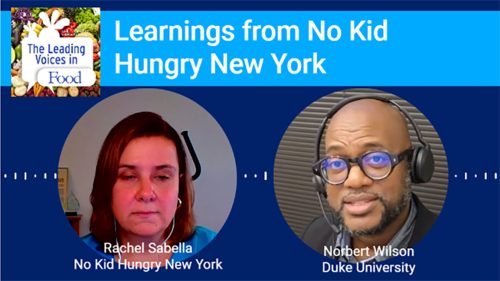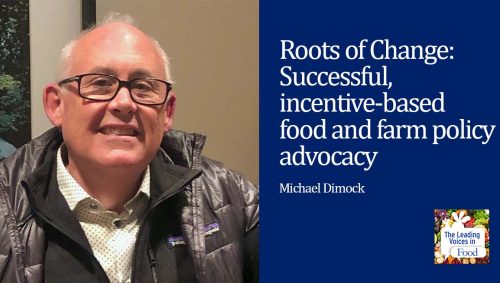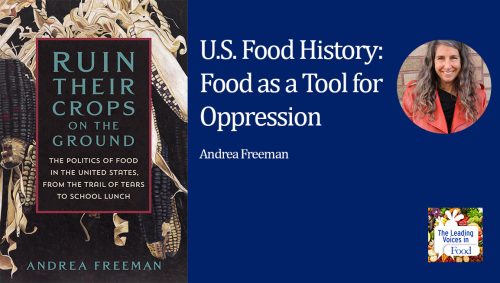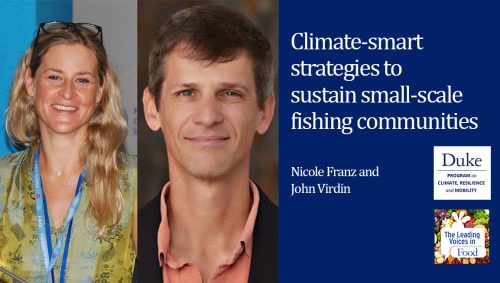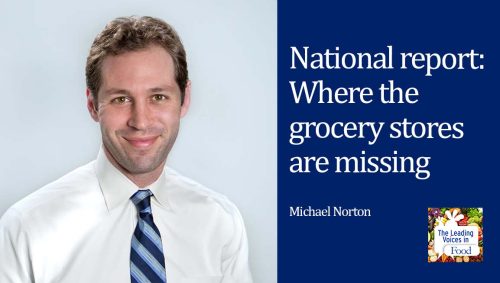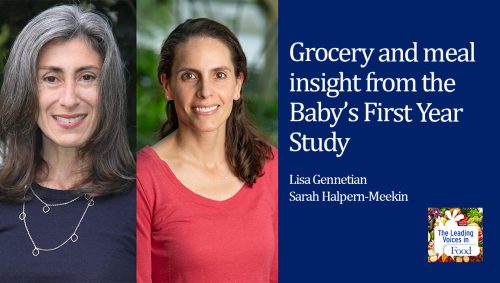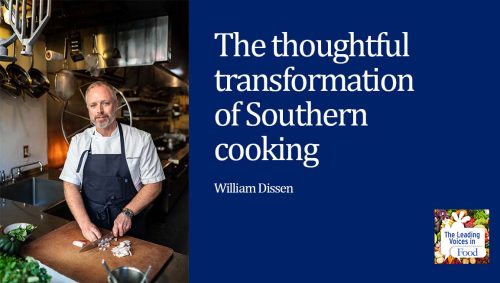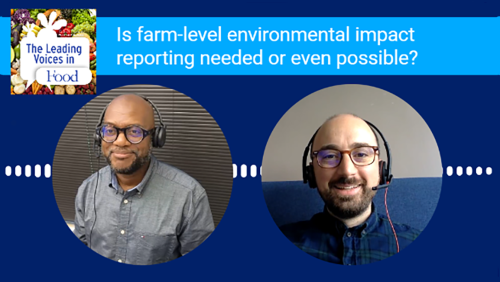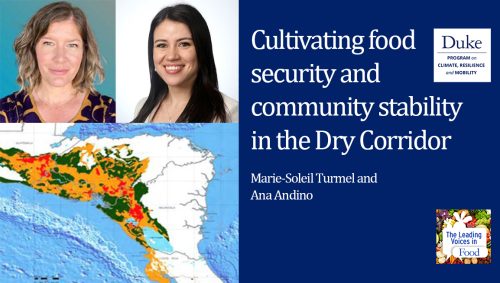The Leading Voices in Food
E117: Society’s Hunger Conundrum: Who is to blame, and who is responsible now?
Food and security, poses one of the most pressing development and human challenges in the world. This has been true for a very long time. And still there is a little social consensus on who ought to do what to solve the hunger problem. Today we’re talking with Dr. Michelle Jurkovich, Author of a new book entitled “Feeding The Hungry Advocacy and Blame in the Global Fight Against Hunger.” She argues that food is a critical economic and social right, and presents a toolkit of ideas for more effective rights advocacy. Dr. Jurkovich is a Political Scientist on the Faculty of the University of Massachusetts in Boston.
Subscribe: Apple Podcasts | TuneIN | Google Podcasts | SoundCloud | PocketCasts | Radio Public
Tags: Equity, Race & Food Justice | Food Insecurity | Food Policy | International Food & Ag Policy |

Dr. Michelle Jurkovich is an Assistant Professor of Political Science at UMass Boston and a Visiting Fellow at the Edmond J. Safra Center for Ethics at Harvard University. She is the author of Feeding the Hungry: Advocacy and Blame in the Global Fight Against Hunger (Cornell University Press, 2020). Her research interests include hunger and food security, economic and social rights, and ethics. Her work has been published in International Studies Quarterly, International Studies Review, and Global Governance, among other outlets. In 2020 she was awarded a Kluge Fellowship at the Library of Congress (residency postponed due to the pandemic). Previously, she served as an American Association for the Advancement of Science (AAAS) Science and Technology fellow working in the Office of Food for Peace at the U.S. Agency for International Development (USAID) and a postdoctoral fellow at the Watson Institute of International and Public Affairs at Brown University.
Interview Summary
Let’s begin with this: hunger and food insecurity are very often discussed as either distribution or supply problems. Your book encourages a different view. Can you explain?
Often, we hear hunger framed as a technical problem with technical solutions. So, if only we could learn to grow more food with fewer inputs and in more environmentally sustainable ways. And if only we could improve market access to that food, then we could solve the hunger problem. But few benefits in society are ever distributed equally or fairly. Even when scientific advancement allows those resources to exist in abundance and the world currently produces more food than it needs to feed even its ever-growing population. Should new crop varieties and farming methods enable it to produce an even greater surplus, there’d still be no guarantee that that abundance would reach those most in need, the most marginalized in society.
So hunger isn’t a supply problem, but the distribution framing of the problem. Saying we just need to be able to improve market access and people’s ability to pay for food. So here we have the poverty is causing the problem frame, is also problematic. And here’s why. Underlying that hunger is a distribution problem frame is the assumption that poverty necessarily will preclude access to food. And that seems completely reasonable on its face. Let’s think about other equally complicated and expensive to solve social problems where we do not make that assumption. For instance, universal access to primary education. So let’s imagine a seven year old child has no access to education. Who might we imagine the community would think was to blame for the inability of that child to attend a school? I don’t think poverty would be most people’s response.
Even in the most politically conservative communities in the US, the state, by which I mean the government, would be seen as to blame if the seven-year-old child did not have access to a free education. Access to primary education is a human right which society has determined and reiterated in law that the state is obliged to provide to children living within its borders. And poverty should not preclude access to primary education. But if you consider the same seven-year-old child and ask who is to blame if that child does not have access to dinner when he gets home, you’re likely to get a very different answer. Well, if he went to school, he could at least have gotten lunch. Of course, this doesn’t help with food on the weekends or holidays or dinners or should the child not attend school. Or doesn’t the Catholic church have a soup kitchen? Or aren’t there food banks, which are often funded by private donations? Or, well, if his parents worked harder, they’d be able to afford enough food for their kid.
Providing education is not cheaper or easier for the government to do than providing adequate food for the child. But societies have determined despite this cost, that poverty ought not preclude access to education for the same kid that poverty does preclude access to dinner. And I use that example not to deny the gross inequalities that exist in our public education system in the US, but rather to highlight how it’s not inevitable that societies think your access to an essential need necessarily ought to be determined by your ability to purchase it.
I argue that a core challenge for the hunger problem, is consensus on who ought to be responsible for ensuring individuals have access to adequate food and who’s to blame when individuals are hungry. And when there’s no consensus on who is ultimately responsible for ensuring the right to food, it’s difficult to effectively leverage social pressure to compel change. If we don’t first reach a consensus on these core questions especially who’s ultimately responsible for ensuring people have access to adequate food. Is it the national government, civil society, food banks that are often funded through private generosity, corporations, etc. If we do not have a norm in society then indeed a given actor is responsible for ensuring a right to food, such that if the right to food remains unfulfilled we know which actor is to blame and can effectively focus advocacy on that actor, we should expect hunger to continue much as before.
It’s a fascinating perspective you provide. And not one that I’ve heard discussed in much detail. So this is really a very much needed perspective. So, if there has been a long history of the right to food in international law, and you mentioned that there just aren’t enough parties taking responsibility and lack of overall coordination for this, why is that the case, do you think?
Right. And this is a core puzzle – this tension between laws and norms. And the answer is, because laws are not the same as norms and oftentimes we can have existing law, and that doesn’t necessarily mean there’s a norm in a given society that indeed a particular actor really is obliged to do a particular thing or to behave in a particular way. So in this case, there certainly is international law. And sometimes even domestic law, ascribing responsibility to national governments to ensure the right to food of its people. In a growing number of countries, the right to food is even included in national constitutions. And if we were to look at the first mention of a right to food, we can think back to the drafting of the universal declaration of human rights in the 1940s. It was a unique moment in time because at the time in which the right to food was included in the declaration, it didn’t already exist on any national constitution or other international convention. So it was at that moment, a new right. But of course over time, it has been reiterated in other legally binding treaties and conventions including the international covenant on economic, social and cultural rights, as well as other agreements. Some of which the United States have even signed on to like the voluntary guidelines on the right to food in 2004. But, we know laws and norms don’t always walk hand in hand in society.
So when I say a norm, I mean, a socially shared standard of appropriate behavior for actors of a given identity. So norms tell you who is expected to behave in a particular way, such that if they don’t, you can more effectively focus social pressure. So to take one example here in Boston, if you’re riding our subway system, there’s an expectation that commuters stand on the right and walk on the left of the escalator going in and out of the station. And if you were to stand on the left, you’ll get a side-eye or maybe even a shove or a verbal review that lets you know that you’re violating the social expectation by commuters. You ought to stand on the right and walk on the left. And tourists very often get this wrong not being aware of the social norms here in Boston, and Bostonians are quick to clue them in sometimes more kindly than others. But having a norm allows for social pressure to compel an actor who is expected to do a particular thing to change that behavior and make good on that expected action.
But if there’s no norm, even if societies agree on a moral principle, that is a shared understanding that something is bad or tragic or wrong, here that children go hungry in the modern age for instance, we shouldn’t expect that same social pressure to compel change. Because if there is no norm, then there’s no norm violator. Sometimes laws and norms can walk hand in hand. There are laws against murdering people and there are social norms that match those laws, but sometimes they don’t. And so my book looks at an important community of international anti-hunger organizations and argues that in this community, there is no norm that any one unitary actor such as the national government really is expected to act in ways that insurance people aren’t hungry.
But norms aren’t static things, they grow and they change over time and they differ from place to place. So there may be a growing norm of this obligation in India, for instance. And changes in the way the government and media are discussing food insecurity in the US during the pandemic, may itself open up space to build such a norm domestically. But I don’t believe we’re there yet. And we’ll have to see if after the shock of the pandemic subsides, if Americans go back to having a relatively high tolerance for hunger in their country with limited domestic pressure and advocacy centered on the government as a violator when that hunger persists.
I would like to get your ideas on what can be done about this. But before we do that, let’s talk a little bit about how you did your research. So you did extensive interviews with staff at top international anti-hunger organizations, and you also did extensive archival research at FAOs archives and the US and UK national archives. What were you interested in understanding as you did this research?
Two tracks of things. For the archives, I was of course interested in the past. So here, I wanted to understand how hunger had been put on the political agenda internationally, as a problem that was to be solved. And so I looked at starting in 1943, the Hot Springs Conference, which took place here in Hot Springs, Virginia. Which was a key moment where States came together at a really interesting time. And you can imagine World War II is still going on. It’s a bit of an odd time for the US government to call for an international conference to talk about hunger, but they did. So part of the research was in trying to unpack what made food a salient issue at that moment, such that responding to hunger, not domestically but internationally, would become a core theme for this first conference. And this conference was important too because it resulted in the construction of the Food and Agriculture Organization, the FAO a few years later, which to this day is very important international organization in responding to the hunger problem.
And I also wanted to look at key moments like when food was included in the universal declaration of human rights during the drafting process and in the covenant on economic, social, cultural rights. In particular looking at how both the US and the UK government considered its inclusion. The interviews construct the majority of the rest of the book. And here I’m interested in understanding how senior staff at top international anti-hunger organizations understand blame for chronic hunger. Who if anyone is to blame for the problem and how they believe the problem should be solved.
Your book talks about a new model for dealing with international anti-hunger advocacy efforts called a buckshot model. Can you explain what that is?
To the purpose of the model is to help describe and explain the behavior of international anti-hunger advocacy. So in my own field of international relations, we often assume that when faced with a human rights violation or another bad outcome, that activists necessarily will join together and they will agree on a single unitary actor to target their advocacy efforts, to apply pressure, to compel that actor to change its behavior in response to whatever that violation may be. But in terms of international anti-hunger advocacy, we see a wide diffusion of target actors, not a concentrated pressure on one. So here we see advocacy targeting transnational corporations, international financial institutions, outside states, as well as national governments and others. And the buckshot model helps to map that diffusion. We also assume in some of our prior scholarship, that there’s a specific directionality in advocacy work. Namely, that local NGOs often in global South countries will reach out to international NGOs often headquartered in global North countries and invite them to join an advocacy effort. But in the case of international anti-hunger advocacy, that directionality is more complicated, and oftentimes the reverse is also true. So international NGOs may decide abroad contours of an advocacy effort in their own headquarters. Then reach out to local partners to join in. The book probes the causes of that type of advocacy. And it looks to what enables differences in advocacy around food from other human rights and considers what may be some of the limitations of that type of advocacy in holding any one actor accountable.
This work is fascinating and it speaks to how these efforts are financed, who controls the conversation, what nations and the world sees such fundamental rights. So I think your book rates and makes a really nice contribution in that regard. But let’s talk about the global pandemic and how that has exacerbated food insecurity, both here and abroad. What lessons can be applied from your book to the anti-hunger efforts that are occurring?
We are certainly seeing, the issue of hunger in the United States receive increased attention both by the media and public officials during the pandemic. And there have been meaningful changes in public food assistance measures during the pandemic. So for example, beginning in March of 2020 and up until now, you have seen some states begin to implement publicly funded food assistance programming that has been rarely if ever seen in US history. So in cities like New York City and in Boston, ready to eat hot meals are being provided to all who need them, regardless of age, income or employment status. In California they implemented a novel reimbursement program designed to pay restaurants for providing free or reduced cost food, I think specifically to seniors. As well as nationwide there’ve been reforms to allow for online purchase through increased P-EBT credits. Though on this point it’s worth noting that USDA has restricted that online benefits in many states like Massachusetts to use an either Walmart or amazon.com. So this does raise some serious concerns about monopolizing benefits to large corporations.
Perhaps the most visible changes, have taken place in modifications to free or reduced school lunch programs during the pandemic. So previously, if American children needed a free lunch, they were required to meet specific eligibility requirements which has to be physically present at school to receive it. And being a hungry child wasn’t enough to entitle them to a meal. They were required to perform a service in exchange – this is the attending of school. And in much of America, dinner time, school holidays, weekends, summer breaks, they left the same children without a venue for prepared food and existing WIC and SNAP programming did not adequately fill that void. But the pandemic has resulted in many school districts making lunches and breakfast available for pickup without conditions applied to all children who need them. As we’ve seen with the rising hunger rates, however, that is not an adequate response, it remains quite inadequate. But it does represent a change in the conditionalities applied for hungry children to access meals. And those are important changes for how public food assistance programs work in the US, and I think they’re promising.
And yet, the US has historically shown a very high tolerance for hunger within its borders, at least for specific populations of individuals. So food insecurity rates among households with children headed by a single woman in the US have consistently been between 28.7% and 35.3% every year since 2014. And the USDA estimates food insecurity rates among black households, again, every year has ranged between 19.1% and 26.1%. And among Hispanic households, again, every year between 15.6% and 22.4% since 2014. And this persisted due to the very limited public food assistance available in the US. But of course, this did not get much media attention. And historically, Americans have not been entitled to adequate nutritious food when they’re hungry. At least not at the expense of federal or state governments. Public food assistance programs are and have always been limited and supplemental and not designed to cover all nutritional needs. The effects of limited government engagement with hunger have disproportionately effected women and people of color and resulted in a patchwork system of assistance where charities and privately funded food banks attempt to fill the gaps left by the governments supplemental nutrition assistance program or SNAP.
So the question for us now I think, is whether the increased attention and funding during the pandemic will be short-term responses or whether this might signal a potential opening and reconsidering state obligation to the right to food in a post pandemic world.

